Is it awkward eating at Yakiniku restaurant alone?
July 16, 2019
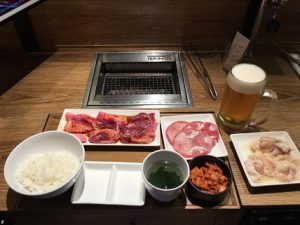
When I go home late at work, I sometimes drink alone in a standing bar near my office and then go home. I personally don’t care about solo dining, however, there are people who can’t afford eating alone because of family traditions, or it’s awkwardness.
What kinds of opinions are there about solo dining in your country?
Nowadays in Japan, a growing number of people are eating alone and it is increasingly considered socially accepted.
Recently, “Gusto”, one of the major family restaurants, has enhanced the table for one person.
As you can see from the photo below, the solo dining space in Gusto provides the environment especially for work and study unlike the other normal seats.

The features are as follows.
- Power supply and Wi-Fi are available
- Completely private space
- Enough space for both a laptop and for dining
The other day I have used the space between the meetings and it was very comfortable.
Fast food restaurants like McDonald’s and Yoshinoya have had many solo diners before, but it is a recent change that the number of solo diners has increased besides fast food restaurants.
Originally “famiresu” is an abbreviation for family restaurant, so main target user are family. However, the recent trend is that more people use the place alone.
In addition, “Ikinari Steak” the stand-up steakhouse or “Yakiniku Like” where solo diner can enjoy yakiniku alone, are also getting popular in Japan.
Although the “Ikinari steak” has opened its first overseas in New York, it seems to be struggling.
The food service business is greatly influenced by the food culture of the country, so just because it is popular in Japan does not necessarily mean it is popular overseas.
For example, “Yoshinoya” in China where most users are family unit provide various menus like a family restaurant, not a beef bowl specialty restaurant like in Japan.
If you have an opportunity to come to Japan, why don’t you try eating out alone? Even if you go with more than one person, you will usually be sitting next to each other, so please enjoy a new experience in Japan.

In Japan, there are two major ways to do Karaoke:
(1) at a Karaoke Box:
You are assigned your own room for you and your party to enjoy. It is a good option to enjoy karaoke with your friends or fellow workers.
(2) at a Karaoke Snack Bar:
It is a small individually-owned bar that usually has a single Karaoke machine, so you need to share a karaoke machine with other guests.
About Karaoke Snack Bars, please refer to the following article for details. (Only Japanese)
https://loohcs.jp/articles/293
At a Karaoke box, your party can enjoy karaoke on your own ways, however, at the karaoke snack bar, you need to be careful to choose songs depending on the atmosphere and the other customers. In such bars, it is not so “cool” to sing only anime songs or songs popular among young generation.
In this edition, I will introduce a selection of famous Japanese songs that make you special.
There are 10 songs for each male and female singer.
All songs are very popular among 50’s to 60’s Japanese, that melody is not so quick and lyrics are simply understandable.
If you go to karaoke with senior Japanese business people and sing a few these songs, you will be no doubt to be considered “you are so SHIBUI(You have really good taste)!”
■ Songs by male singers
Natsu no owari no harmony (Yoosui Inoue / Kooji Tamaki)
This song is covered by many singers and known to people of a wide range of ages.
Https://www.youtube.com/watch?v=WCSeiSOaHxY
Mata au hi made (Kiyohiko Ozaki)
https://www.youtube.com/watch?v=5NVcDuS_hxM
Hajimari wa itsu mo ame (ASKA)
https://www.youtube.com/watch?v=74IKR0WeKXY
Nani mo ienakute …natsu (JAY WALK)
https://www.youtube.com/watch?v=ZkoQPOhhu38
Sake to namida to otoko to onna (Eigo Kawashima)
https://www.youtube.com/watch?v=tjrPAAiCbuA
HERO (Kai Band)
There are many songs with the same title. Please search on the “Kai band.”
https://www.youtube.com/watch?v=ZVU3BVmxxU8
Azusa 2 goo (Kariudo)
https://www.youtube.com/watch?v=OCK-nWaYxJE
Saigo no ame (Yasushi Nakanishi)
https://www.youtube.com/watch?v=JmmPzK0chqU
Kowarekake no Radio (Hideaki Tokunaga)
https://www.youtube.com/watch?v=C7QVaahn44A
Kanashii iro yane (Masaki Ueda)
Those who speak Kansai dialect should master this song!
https://www.youtube.com/watch?v=xQeEOoKhIqg
■ Songs by female singers
Ito (Miyuki Nakajima)
This is a very popular song at weddings.
I couldn’t find the original video, so I will introduce other singers are singing instead.
https://www.youtube.com/watch?v=DboG2xszmcE
This video that amateur singing at a wedding is also popular.
https://www.youtube.com/watch?v=aXwIawYfkjgs://www.youtube.com/watch?v=aXwIawYfkjg
Amagi goe (Sayuri Ishikawa)
https://www.youtube.com/watch?v=yvc0LadtZuk
Love is Over (Ouyang Fei Fei)
https://www.youtube.com/watch?v=zzRsmDHmZJI
Kawa no nagare no yooni (Hibari Misora)
Hibari Misora is called a “Diva of Shoowa.”
https://www.youtube.com/watch?v=d_Ns_B23LT0
Ano kane o narasu nowa anata (Akiko Wada)
https://www.youtube.com/watch?v=mdLydN0liYQ
Toki no nagare ni mi o makase (Teresa Teng)
https://www.youtube.com/watch?v=oJY2RtLADkM
Mata kimi ni koishiteru (Fuyumi Sakamoto / Billie Bang Bang)
This song was originally a male duo “Billie Bang Bang”, but it became more famous with the cover of Enka singer “Fuyumi Sakamoto.”
https://www.youtube.com/watch?v=SBTjDVLmHn8
Miserarete (Judy Ongg)
https://www.youtube.com/watch?v=OFNW0IZUdto
Koi ni ochite (Akiko Kobayashi)
https://www.youtube.com/watch?v=7lTkywZljmk
Olivia o kikinagara (Anri)
https://www.youtube.com/watch?v=TgRQP9C1M4s
Nagori yuki (Iruka)
https://www.youtube.com/watch?v=tp9qHeMjiKg
You can easily find the lyrics of any song by searching for the keywords “song title & lyric”.
It will be a good study of Japanese to find your favorite song and remember the lyrics.
So why don’t you try to sing your favorite Japanese songs in Japanese, whether you are good at singing or not good at singing?
Three Japanese people the world respects
May 17, 2019
In the recent issue, Newsweek Japan has come out with a special feature titled: “100 Japanese people the world respects”.
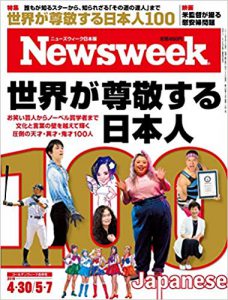
Not only the world-renowned athletes such as Ichiro (former MBL player) and Naomi Osaka (professional tennis player), but also there are many influential Japanese known only in certain countries.
In this feature, I would like to introduce three Japanese whom I am interested in.
Marie Kondo (Tidying consultant)
In 2010, Marie Kondo, “KonMari” became famous in Japan as an author of a bestselling book “The Life-Changing Magic of Tidying Up”. Also, Netflix’s hit show “Tidying Up With Marie Kondo” has been broadcasted since January 2019, and her popularity spread all over the world. In recent years the word “KonMari” has been used in a sense of “tidyng up”. The KonMari Method encourages to keep only those things that spark joy, and to thank them for their service- then let them go. KonMari philosophy has changed the way of thinking about lifestyle, not just how to clean up the space.
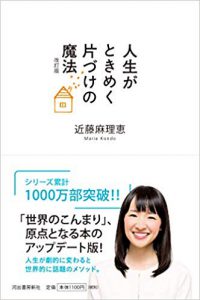
Hirokazu Koreeda (Film director)
I am sure that many of film fans might already know him well. His 2013 film, “Like Father, Like Son (“Soshite chichi ni naru”)”, won the Jury Prize at the 2013 Cannes Film Festival. And in 2018, his film, titled “Shoplifters (“Manbiki kazoku”)” won the the highest prize award “Palme d’Or” at the Cannes Film Festival. Unlike Hollywood style, Mr. Koreeda’s works are not flashy. The themes of his works is usually family matter and relationships, which are very thoughtful. Also, because of the theme, his movies would be very helpful to learn Japanese daily conversations as well.
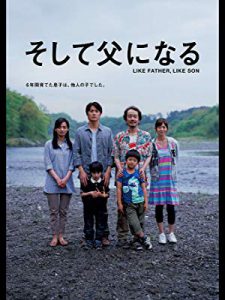
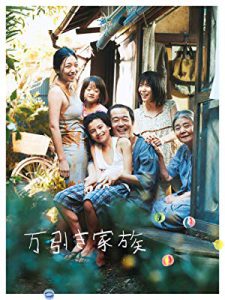
Kazuo Inamori (Entrepreneur)
Mr. Inamori was a founder of Kyocera and KDDI. In 2010, as requested by Japanese government, he took over as chairman of near-bankrupt Japan Airlines (JAL) with no salary. Furthermore, he successfully achieved a V-shaped recovery of 200 billion yen in operating profit in just two years from that, and now is called the god of management. “Seiwajyuku” , the learning groups of Inamori management philosophy, are spread into Brazil, the United States, Taiwan, Korea and Singapore, and his books are sold well in China as well.
As the opposite perspective, I hope someday you might be featured as “100 foreigners the Japanese respect” For that, I will do my best to contribute more for your learning Japanese language. (^ ^) /
What are the popular SUBSK models in Japan?
April 22, 2019
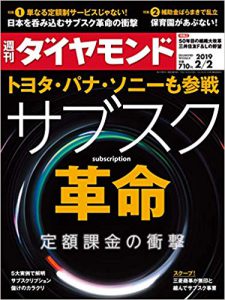
■ What is “SUBSK”?
Do you know the word “SUBSK”? This is a new Katakana word derived from an English word “subscription”, meaning a service or business that users usually pay a “monthly fee” or royalty depending on the period of use.
■ The most popular SUBSK model
Traditional services such as newspapers (many Japanese subscribe to newspapers as well), membership fee for gym, and house rent fall under this category. Recently, IT related services are increasing, for example, Microsoft office software is 37,584 yen for purchase-type, but 900 yen for monthly for subscription type. Adobe’s Photoshop was 96,000 yen at the time of purchase (as of 2003), but the current monthly fee is 980 yen. While the sale unit price drops, Even the sale unit price drops, Adobe’s revenue has increased significantly by a successful user acquisition strategy. In addition, the all-you-can-listen service, such as Apple Music and Spotify are also popular .
■ Why the SUBSK is getting popular?
Why is the number of SUBSK service increasing? Let me analyze the reasons from both sides of users and companies.
(1) Users
Cost: SUBSK is much cheaper than purchase type. In addition, initial costs, upgrade costs, support costs, etc. are all unnecessary.
Easiness: You contract the service only for the period you want to use. If you are not satisfied with the service, you can cancel it immediately.
(2) Companies:
Service improvement: The services make the companies much easier to analyze the reason of cancellation and undertake service improvement. It is easy to plans for constant growth and also it is highly valued in the stock market, therefore new market entrants is increasing.
Customer LTV (Life Time Value) Improvement: The longer a company succeeds in attracting customer to its product, the more customer LTV will be improved even the unit price is low.
If these two functions(service and customer LTV improvement) work well, a virtuous cycle, that is “user satisfaction” > improvement of repeat rate> “sales improvement”, could be created.
■ What are the recommended SUBSK services in Japan?
Let me introduce some of the popular and unusual services in Japan.
(1) Amazon Prime Video
With an annual membership of 4,900 yen, you can watch movies, dramas, and animations. The annual fee for such Amazon Prime has been raised from 3900 yen to 4900 yen stating on April 12,2019. However, this price is less than half of $ 119 in Amazon USA, so it’s still a quite good deal, I think. Because of viewing restrictions depending on the area, Amazon prime membership of other countries will not work in japan. It is necessary to apply for Japanese prime membership, if you want to watch Japanese content.
(2) Sutadiisapuri (study supplement)
This service is recommended for families with children attending schools in Japan. It is a service that is used by 339,000 elementary and junior high school students in Japan because the video classes at the preparatory school are all at a 980 yen for a month.
(3) THE STELLA
A monthly service delivering 1 or 2 bottles of premium and cult wines depending on the plan.
https://www.the-stella.com/service/

(4) Bloomee LIFE
A weekly service that delivers flowers for appreciation.

(5) YClean
A shirt delivery service with both rental and cleaning of 20 shirts for 1 month.
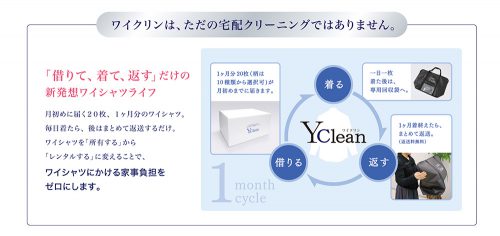
(6) airCloset
A service that a professional stylist coordinates the entire body and delivers a set of clothes.

Please let me know if there are other services available in your country (^ ^) /
The Japanese craft beer market trends
March 18, 2019

Recently, it is getting much easier to find bars and restaurants offering craft beer in such places as my workplace “Yokohama” and living area “Shonan”.
Also, I found there are a lot of my non-Japanese friends who love craft beer.So in this edition, I would like to introduce recent craft beer popularity in Japan.
■ Three reasons why Japanese craft beer industry is currently booming
Reason 1: Softened the liquor tax law in 1994
Japanese government softened the strict laws that governed the granting of brewing licenses. Up until then, to become licensed, a brewery needed to be able to produce 2 million liters of beer each year and the law contributed to the domination of major breweries such as Kirin, Asahi, Sapporo, and Suntory. With the change in regulations, breweries needed only to demonstrate a capacity of 60,000 liters, allowing new, smaller breweries to enter the market.
Reason 2: Changing name from “local beer” to “craft beer”
Because many of small brewers were in rural areas, the name as “local beer” was used as first, and after that, the term as “craft beer” gradually spread. The word “craft” is associate with the word “handmade”, so this name seems to be contributing toward craft beer popularity.
Reason 3: Global craft beer boom
Craft beer is booming worldwide with the United States at the head. There are also a lot of cases that people who have drunk good craft beer overseas come also to drink craft beer in Japan after returning home.
■ How to find bars and restaurants serving craft beer
The following sites introduce bars and restaurants serving craft beer, so it is better to search them.
(All sites are Japanese only. Please search from the address where you live.)
My CRAFT BEER
General information website about craft beer
https://mycraftbeers.com/brewery-map
beer-cruise
A website created by a person visiting breweries across Japan
※ This site is published based on the location of the brewery.
Please note that it is not a drinkable place.
■ Writer’s recommendation
I will introduce three bars in Tokyo and Kanagawa, which are highly populated area in Japan.
Craft Beer Market (Tokyo)
http://www.craftbeermarket.jp/
Every 30 kinds of craft beer costs 480 yen.
This bar has many locations.
YOKOHAMA BAY BREWING (Kanagawa)
https://www.yokohamabaybrewing.jp/bar-restaurant
It is located in “Kannai” and “Totsuka”.
A very famous bar in Kanagawa region.
MacKenDy (Kanagawa)
https://www.facebook.com/mackendybrewery/
Stone hearth baked pizza is also served.
Located near “Tsujido” Station.
■How to drink craft beer from various part of Japan at home
For those who has difficulty to go to bars alone, online shopping is recommended.
You can purchase various craft beer from all over the country and also compare the taste.
Here are my recommended craft beer that I actually has tasted, so please try to check them out if you are interested.
Japan national craft beer flight set 9 bottles
Craft beer (local beer) canned beer flight gift set (18 kinds 18 cans)
6 kinds of craft beer flight set <Thanks beer, including the world’s best IPA “YOKOHAMA XPA” >
“Shiga Kogen Beer” Craft beer flight set 6 kinds 6 bottles
“Fuji Sakura Kogen Beer” Craft beer flight set 4 bottles (Pils Weizen Laoh Schwarz Weizen 1 bottle each)
“Fuji Sakura Kogen Beer” Craft beer flight set 12 bottles (Pills Weizen, Laho, Schwarz Weizen, 3 bottles each)
Yona Yona Eeru 350 ml x 24 bottles Yona Yona set with original glass
Please let me know if you have your recommended beer and bars (^ ^) /
Must watch Japanese YouTube channels for business
February 20, 2019
YouTube’s popularity has greatly grown within these years in Japan.
There seems to be more people searching on YouTube rather than Google, especially on finding a way to do something. However, in fact, many of YouTube channels in Japan are made for young generation, not for business use. So this time, I will introduce my recommendation of Japanese YouTube channels for business persons.

Horiemon channel
https://www.youtube.com/channel/UCXjTiSGclQLVVU83GVrRM4w
A channel by Mr. Takafumi Horie, a famous IT entrepreneur commonly known as “Horiemon”.? There are a lot of fan of him, however, some people do not like him very much because of his frankness of speech. He is extremely well briefed on various business, not only IT business, but also rocket, gourmet and so on. In this channel, Mr. Horie discusses new business ideas with people in vogue such as best-selling authors. Also, he answers various questions from the readers of his mail magazine that gives beneficial ideas for business. This channel is updated frequently and well-organized.
NewsPicks
https://www.youtube.com/channel/UCfTnJmRQP79C4y_BMF_XrlA/featured
A channel by News Picks, which is a content curation media for business. (I introduced NewsPicks in this article https://goo.gl/ih8A8b ) Many business talks with well-known entrepreneurs and innovators are up on this channel.
There are also videos (https://www.youtube.com/watch?v=XOlE7uqvvLE)of Mr. Kosaka known as “Pico-Taro” who is famous for “”Pen-Pineapple-Apple-Pen”. He talks about the hidden story of Pico Taro’s birth. Japanese subtitle in this channel is excellent, so it will help your listening practice as well.
TEDXTOKYO
https://www.youtube.com/user/tedxtokyo/videos
A channel of TEDxTokyo which is the Japanese version of TED.
Although quality and quantity of this program are inferior to the above two, it will be helpful for those who are interested in an interview and a presentation in Japanese.
Industry Co-Creation
https://www.youtube.com/channel/UCJg5PAsj8fP45Fn8Pr5a3LQ/featured
Industry Co-Creation is an entrepreneur conference that is gathering of company founders and business leaders. Movie of pitch events is the main content of this channel. This channel will be helpful for those who are interested in an elevator pitch or a presentation.
BBT 757 program
https://www.youtube.com/user/BBT757program
A channel of online university “Business Breakthrough University (BBT)”, presided by a well-known management consultant, Mr. Kenichi Ohmae. It covers such topics as MBA, business news, and business trends.
Sekai wa ima – JETRO Global Eye
https://www.youtube.com/channel/UC7yNsJvQ0wMOh6cdtUajLXQ
A channel of JETRO (Japan External Trade Organization) which supports overseas expansion of Japanese companies. A content format of the channel is like a real TV news program, and the narration is made by a professional narrator who speaks beautiful Japanese.
It is especially recommended for people involved in trade.
Kigyoo TV
https://www.youtube.com/channel/UCeKbsDj3ESBP5VuYTItN35w/featured
A channel of “Kigyoo TV”, a movie learning media for entrepreneurs.
The main contents of this channel is interviews of venture-business entrepreneurs.
All the channels I introduced this time are useful not only for Japanese listening practice but also to your business. So check them out!
PS
I will introduce another channel as an extra edition.
Dad has naturally curly hair
https://www.youtube.com/user/masatoikebe/featured
A family channel of “VAN LIFE”, “Vehicle Night” enjoying outdoor such as hiking, surfing, skiing, snowboarding. There is no useful business information, however, I recommend this channel for people who want to enjoy outdoor activities with family in Japan.
There are many information on ski resorts, travel stories from Chiba to Hokkaido by car, and so on.
Are Automatic Captions on YouTube so accurate?
January 17, 2019
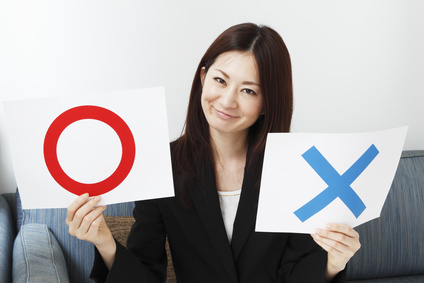
I introduced the live caption and subtitles feature for Skype in the previous article, so this time I would like to share with our readers the Auto Translate Captions on YouTube.
To test the auto translate captions on YouTube, I chose a video that TV Tokyo’s popular news program called “World Business Satellite” introduced our company (Japan Online School).
The following six people (A to F) appear in that video.
A: Japanese / narrator / male
B: Japanese / narrator / female
C: Japanese / Japanese teacher / female
D: Japanese / company manager / male
E: Foreigner / male (Japanese Level = Intermediate)
F: Foreigner / female (Japanese level = advanced)
Here is a compilation video of YouTube’s automatic captioning based on the original speech.
The accuracy rate of automatic captioning in each 6 patterns (A to F) was as follows.
A: Japanese / narrator / male: 81.8%
B: Japanese / narrator / female: 97.3%
C: Japanese / Japanese teacher / female: 88.6%
D: Japanese / company manager / man: 87.3%
E: Foreigner / male (Japanese level = intermediate): 56.6%
F: Foreigner / female (Japanese level = advanced): 85.7%
Concerning the average accuracy rate, native Japanese speakers (A to D) achieved 87.0%, while non-native Japanese speakers (E & F) of 65.2%. As expected, recognition of native speakers’ speech is more accurate than non-native speakers.
Also, the results varied even among foreigners; Ms. F who has almost native level proficiency in Japanese was recognized with high accuracy, while Mr. E with intermediate level was recognized only about half of his speech.
As in the following cases, there were some sentences that became completely wrong meanings from the original.
〇 <Buchoo>, chotto <yoroshii> deshooka.
(Department manager, is it okay?)
× <Moochoo>, chotto <dooji> deshooka.
(Cecum slightly at the same time)
○ Tokyo<Shoji> e dasu kikakusho nandesuga, <me o tooshite> itadakenaideshooka.
(This is a proposal for Tokyo Shoji. Could you please check this for me?)
× Tokyo<Soojigen> e dasu kikakusho nandesuga, <fuufu o twitter> itadakenaideshooka.
(This is a proposal for Tokyo Soojigen. Could you please tweet a couple for me?)
Although the automatic captioning can be affected by background noise and video’s audio quality, the accuracy rate of two foreigners (Mr. F and Ms. E) was almost equivalent to speaking fluency evaluated by a professional Japanese teacher.
Therefore, I can say that those whose speech is correctly recognized by YouTube’s automatic captioning have a considerably advanced level of Japanese.
So please give it a try (^ ^) /
※Accuracy level of automatic captioning on YouTube varies depending on contents of programs.
It recognizes such programs as news and dramas of which texts are mainly based on script more accurate. On the other hand, comedy shows and live interviews are less accurate.
※ This information is as of January 11, 2019.
Could the live caption and subtitles feature in Skype tell how accurate your Japanese is?
December 17, 2018
On December 3, Microsoft announced the launch of live captions & subtitles feature for Skype. The feature is already available for Japanese version. I think this new feature is useful for all Japanese learners, so I will introduce to you this time.
How to use the feature?
Please refer to the following SKYPE’s official sites.
Japanese version
English version
What’s the level of accuracy of the feature?
Frankly speaking, the feature is not so perfect yet.
Even when two Japanese people converse in Japanese, it was inaccurate.
I think that the feature’s usefulness is limited by its accuracy, therefore, I do not recommend using the feather to make an online meeting, to transcribe its contents, and to make minutes.
How to use the feature effectively
In a free talk, accuracy level was not so high, however, it was much better when reading the script. So it might be a good way to use the feature for practicing reading fluency. If Skype puts captions incorrectly, it means the way of reading Japanese is not perfect, and the listener may misunderstand. The feature would also help you to analyze your weak points in reading Japanese.
These are the live captions I tried for the first time.
Please check them in the picture.
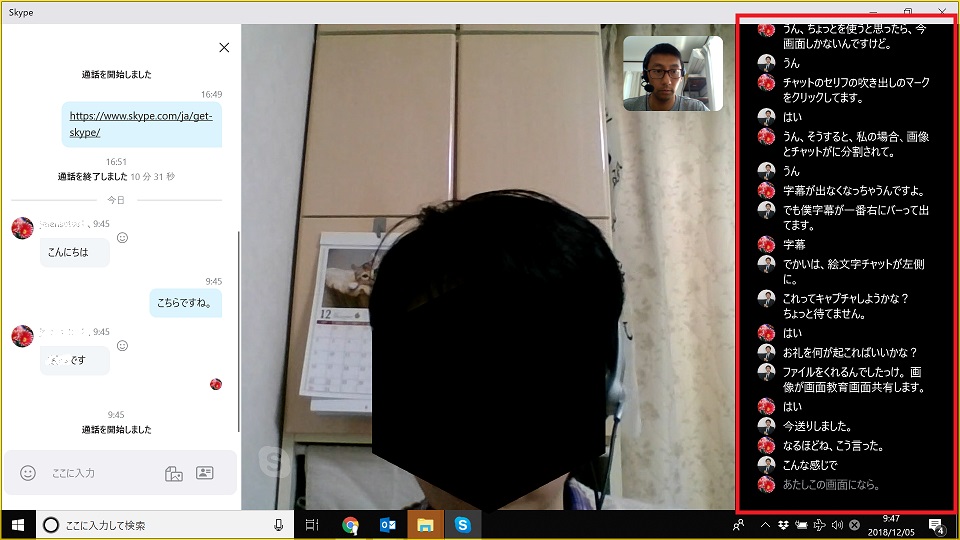
Note: This information is as of December 10, 2018. Let’s pay attention to the further improvement.
What would be a barometer of public safety in Japan?
November 19, 2018
As I wrote in the last newsletter, the Japanese are very proud of the fact that there are many vending machines operating safely in Japan.
However, there are actually a lot of vending machine burglars in Japan.
Especially, a photo booth, a cubicle room in which a person closes the curtain, and sits to have photograph taken by a machine, is easily targeted by thieves.
Also, on Halloween day at Shibuya this year, there were some people going on a rampage, and arrested on suspicion of molestation, taking photos secretly, or rolling over a car.
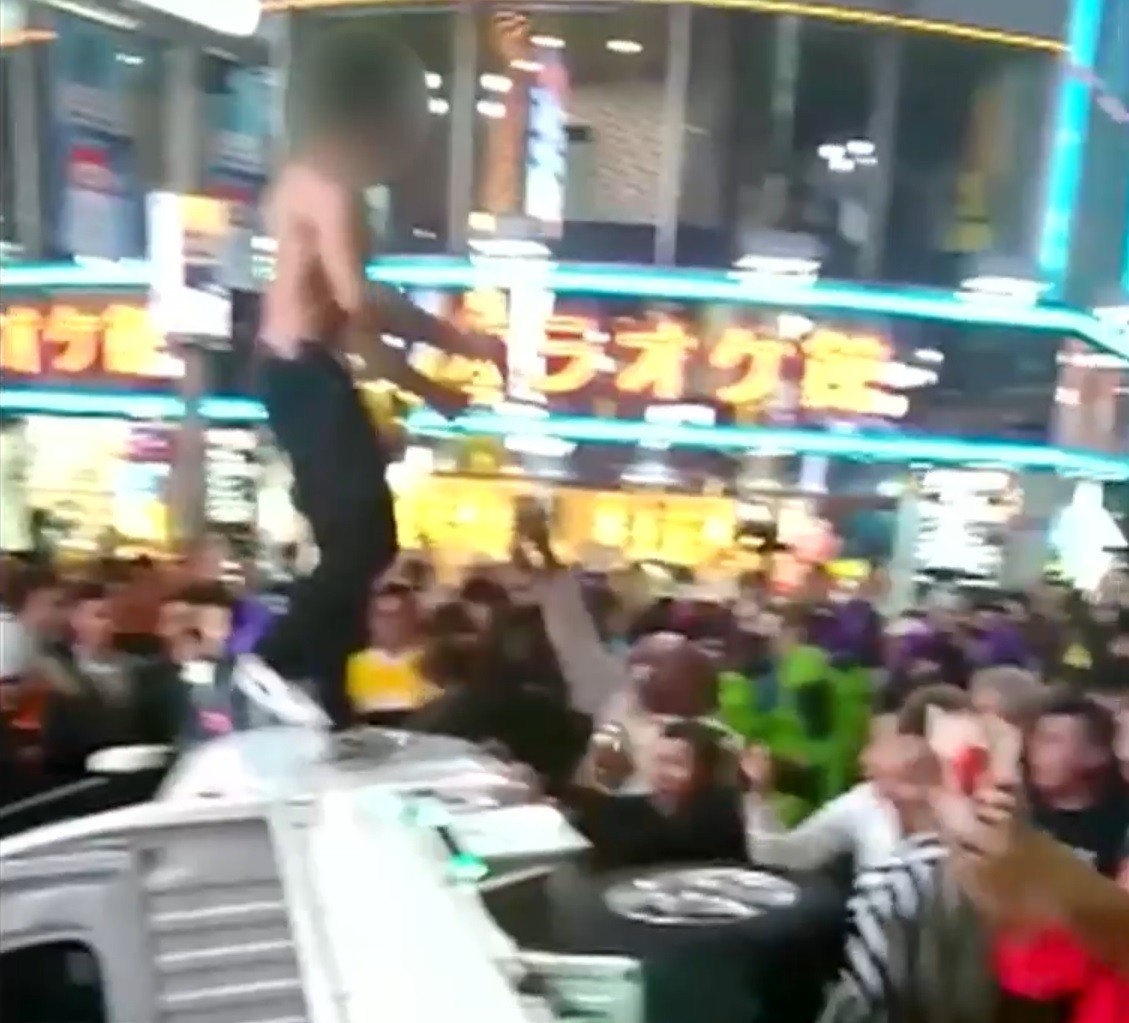
Therefore, I would like to talk about a barometer of public safety in Japan.
One of my friends says that “If you look at the toilet of convenience store, you will know the public safety of the area.” Depends on a sign hanging on the toilet door, you will see how safe the neighborhood is, he insists.
If a sigh says;
- “Please feel free to use” = Safe neighborhood
- “Please notify our staff before using” = Normal
- “Do not use” = Rough area
According to another friends of mine, “Trash box of convenience stores can also be a barometer of security.”
He says that “the neighborhood where the trash box put outside can be an evidence that there are many customers who keep the rules. Therefore, security of the area is good.”
From my perspective, the neighborhood with many flower and cake shops are relatively safe, because flowers and cakes are bought more likely for gifts to others.
I logically believe that there are many people who can do something for other people in areas with many flower shops and cake shops.
What is a barometer of public safety in your area?
If you have any other opinion, please let me know.
*Please note that this is just a personal opinion. It would vary in urban or rural areas, commercial area or residential area. So, please read this article just for reference.
The best place for tourists and consumers where they can enjoy both visual and taste.
October 18, 2018
Today, I would like to introduce the spots that both people who live in Japan and those who come by travel can enjoy it.
Have you heard the word “depa chika”?
“depa chika” is an abbreviation for “basement of a department store”.
The underground of most department stores in Japan has become a sales floor of food materials and sweets.
Usually, department stores sell better products than supermarkets.
Alothough most of products in department store are a little expensive,there are many people who go shopping at depa chika as a little treat for themselves.
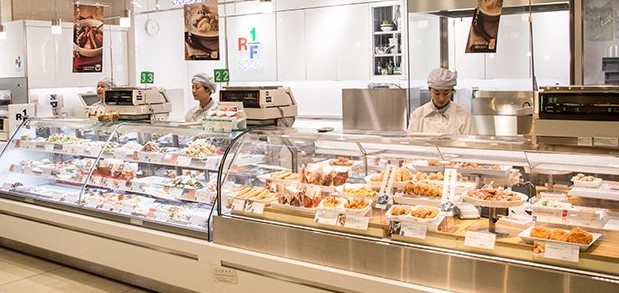
Four reasons to recommend depa chika
Reason 1: Only in Japan
I think that it is unusual for all of the department store’s one floor to be food and sweets.
If you like eating and drinking, you surely will have a good time in depa chika for one or two hours.
Reason 2: Clean look
Food is displayed beautifully, so it is fun just looking.
Reason 3: Deliciousness
Many delicious foods are gathered in depa chika.
There are times when local specialties in Japan are sold, so you do not have to go out to the region to buy them.
Moreover, you might be able to try them. (Please keep good manners in this case.)
Reason 4: Cheapness
I said as “department store is a bit higher than the supermarket”, but these products are very delicious and I think it is much cheaper than the overseas luxury supermarket.
When I went to Hawaii the other day, I have seen the Whole Foods’ Deli corner, but I thought that Japanese department store is cheaper.
If you think that it is a sightseeing spot you can enjoy for free, it is advantageous.
If you want to buy it cheaply, the time zone just before closing is recommended.
There is a high possibility that popular products are sold out, but the remaining products may be discounted.
This is the official Instagram of department store called Tokyu in Shibuya.
https://www.instagram.com/tokyufoodshow/
In this YouTube, foreigners are introducing Japanese depa chika.
Since this site organizes department stores across Japan, it is convenient to find a department store nearby.
http://www.departinfo.com/english/
(Please check in advance whether there is a depa chika.)
Please go to depa chika where you can enjoy both visual and taste (^ ^) /
Categories
Recent Posts
- I cannot keep up with meetings conducted in Japanese. Are there any good ways to study?
- Are there any good writing materials for business Japanese? (Three keys to developing business Japanese writing skills.)
- Are there any free materials available for studying business Japanese reading?
- Should I read newspapers for reading practice in business Japanese?
- Are there any good business magazines to practice reading business Japanese?
Archives
- August 2022
- June 2022
- May 2022
- April 2022
- March 2022
- February 2022
- January 2022
- October 2021
- January 2021
- August 2020
- July 2020
- June 2020
- May 2020
- April 2020
- March 2020
- February 2020
- January 2020
- December 2019
- November 2019
- October 2019
- September 2019
- August 2019
- July 2019
- June 2019
- May 2019
- April 2019
- March 2019
- February 2019
- January 2019
- December 2018
- November 2018
- October 2018
- September 2018
- August 2018
- July 2018
- June 2018
- May 2018
- April 2018
- March 2018
- February 2018
- January 2018
- November 2017
- October 2017
- July 2017
